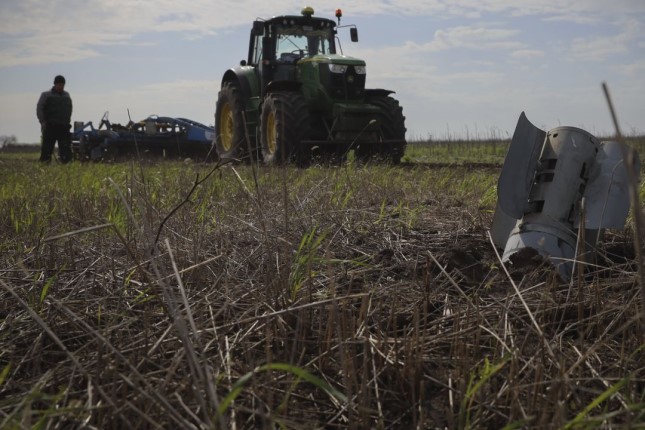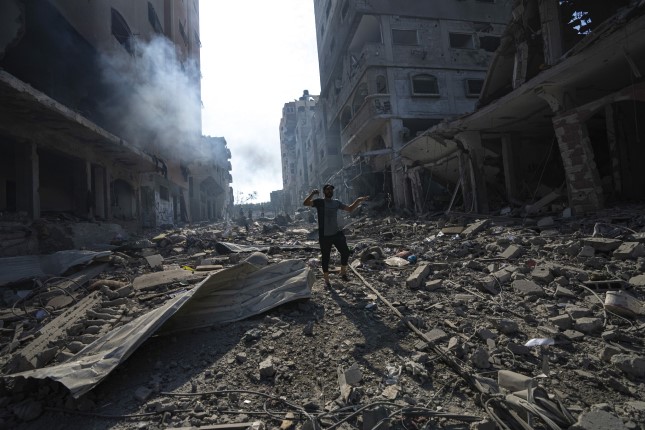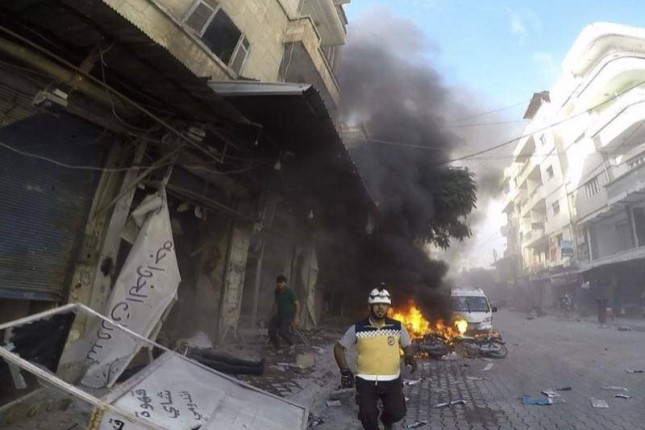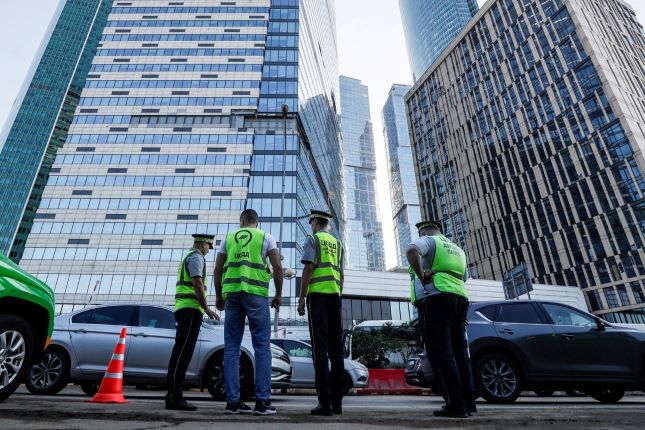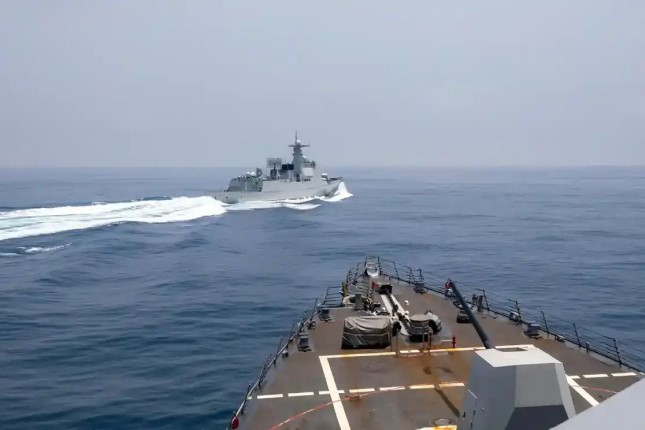Last Saturday temperatures reached 40 degrees Celsius (104 degree Fahrenheit) in the southern Zaporizhzhia province where Ukraine has concentrated much of its forces. The high temperatures resulted in emergency warnings for residents to stay indoors amid the sweltering heat. Temperatures cooled in subsequent days but are expected to remain elevated throughout the coming weeks.
That the Zelensky government is more interested in continuing its bloody counteroffensive during an obvious heat emergency is indicative of the immense social crisis caused by rising temperatures and the inability of capitalism to offer any meaningful solutions.
In addition to the skyrocketing temperatures, Ukrainian farmers and working class Ukrainians continue to face the dramatic after-effects of the explosion of the Kakhovka dam in the first days of the ongoing counter-offensive. The dam’s destruction resulted in the emptying of the long reservoir which lay behind it and served as a vital irrigation source for Ukraine’s most important agricultural region.
More than 700,000 in the area also lost their main supply of drinking water. In response, the right-wing Zelensky government allocated just $4 million to provide alternate sources of water, a paltry sum compared to the billions currently being spent on sending Ukrainian soldiers to their deaths in the failed counteroffensive.
Completed in 1956 as part of the Soviet Union’s development of hydroelectric power, the Kakhovka dam also served to provide Ukraine’s second-largest freshwater reservoir and supply four separate provinces with water through a system of canals.
The dam’s role as an irrigation reservoir was essential to turning a region typically subject to regular droughts into Ukraine’s most productive agricultural region.
Vadym Dudka, an agronomist and CEO of Agroanaliz Ltd, an international agro-consulting company, told the Kyiv Independent that prior to the dam breach, the region contained 330,000 hectares of irrigated land and 80 percent of all vegetables in Ukraine with a large percentage of fruits and grapes. According to Dudka, 85 to 90 percent of the region’s fields were dedicated to corn and soybeans, both of which Ukraine ranked as one of the world’s largest exporters.
As expected, the irrigation systems that formerly fed the region’s agricultural industry are now turning to sand. As Newsweek reported this week, recent satellite imagery from Planet Labs, an earth imaging company, demonstrated dramatic differences in waterways once fed by the Khakovka dam. One image showed the Kakhovka reservoir turned to dry land. While another also revealed that the North Crimean Canal is dry.
Rain in June briefly paused the emptying of the reservoir and its associated irrigation canals, but as temperatures throughout the summer increased, the canals have become all but empty. According to Ukraine’s Ministry of Agriculture, provided the dam is rebuilt it would still take up to seven years to restore irrigation from the Kakhovka reservoir to the region.
Following the outbreak of full-scale war between Russia and Ukraine in February 2022, global commodity food prices hit record highs. Just as prices started to stabilize, the failure of the grain deal allowing Ukraine to ship its products to the world has caused prices for commodities like rice and vegetable oil to rise again for the first time in months.
The Black Sea was traditionally used to ship Ukraine’s grain exports. Without access to its historical shipping routes due to the war, the country’s maximum grain export capacity will be reduced from seven to eight million tons a month to just four million tons, according to Alexandre Marie, chief analyst at Agritel, the agriculture analytics arm of Argus Media.
In response, Ukraine has been forced to use overland routes for export or the Danube River flowing through Romania, which has seen the monthly volume of crops it transports jump from 1.4 million tons to 2 million tons in the past year as Ukraine’s traditional Black Sea corridor routes have been closed off. The cost to ship on the Danube is significantly higher, increasing the price of food even further.
The unprecedented heat wave hitting Southern Europe and now Ukraine has also lowered the level of the Danube by nearly 40 percent, according to Romania’s water management agency.
“The problem is also that the water level in the Danube is getting lower day by day due to drought, so you can’t load barges with wheat at full capacity,” a grain broker based in the Romanian port city of Constanta, Andrei Balasoiu, told Bloomberg.
The further drying of Ukraine’s most important agricultural region will undoubtedly exacerbate the rise in global food prices for years to come. Official figures show food inflation stood at 17.3 percent in the 12 months leading up to June, when the overall consumer price index measure of inflation was 7.9 percent.
As the chief economist at the Bank of England recently admitted, global food prices for the world’s working class will likely never return to pre-war levels and “could still remain higher than it was.”
“Unfortunately, the days of seeing food prices fall, that does seem to be something that we may not be seeing for a little while yet, if in the future at all,” Huw Pill, the Bank of England’s chief economist, said.
Within Ukraine itself food prices have already risen 12.8 percent, surpassing the overall inflation of 11.3 percent over the past year. Both fruits and meat have risen approximately 25 percent, while eggs prices have risen 56 percent.
The rising food prices continue to add to the social crisis plaguing Ukraine in addition to the eradication of an entire generation of Ukrainians serving in the war. In 2022 alone, the Ukrainian economy contracted by over 30 percent.
More than 6.2 million Ukrainians have left and yet to return to the country since the start of the war, Ukraine’s Deputy Economy Minister Tetyana Berezhna revealed this week. And over 5 million are now considered internally displaced.
Tymofiy Mylovanov, president of the Kyiv School of Economics reported that the country now numbers just 31.2 million. He also estimated that by 2030, the Ukrainian population will likely reach only 32 million, suggesting that many refugees will never return to the country. In comparison, the Ukrainian population numbered 52 million in 1991, the last year of the Soviet Union’s existence, and around 44 million before the outbreak of the 2022 war.
The decades-long demographic bleeding of Ukraine, as the war itself, is above all a result of the destruction of the Soviet Union by the Stalinist bureaucracy in 1991. The restoration of capitalism created the grounds for the social plundering of the country by the oligarchs and the imperialist powers, through austerity and now outright violence. The deaths of thousands upon thousands of Ukrainian men will not only further exacerbate the population crisis. This mass slaughter is also already having an immense impact on popular consciousness.
As officials worldwide have continually stated, there is little chance that Ukraine’s economy, which has been all but destroyed by the imperialist-provoked war, will ever recover. The social catastrophe wrought in Ukraine is a warning to the world’s working class that capitalism has no solutions and instead offers a “new normal” of continually rising food prices, war and rising temperatures.
Photo: A part of a Russian rocket is seen in an agricultural field as a farmer works on a tractor during the sowing campaign in the Zaporizhzhia region, Ukraine © AP Photo / Kateryna Klochko.
Source: World Socialist Web Site.
